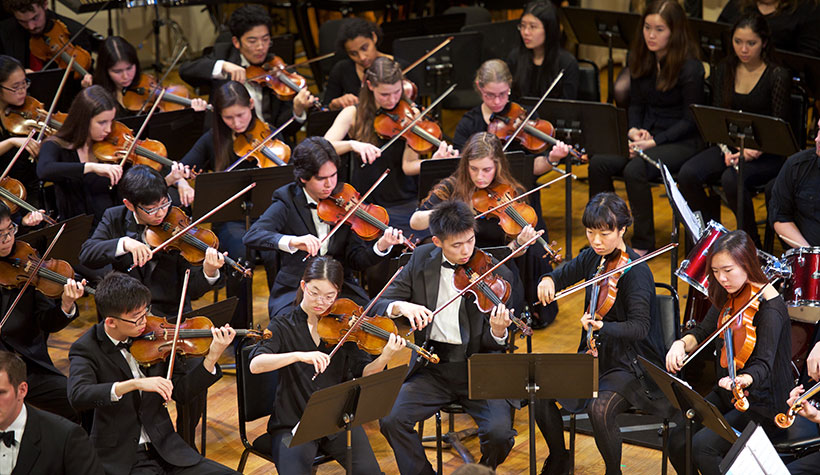

On Nov. 3, the Amherst Symphony Orchestra staged its performance of acclaimed composer John Williams’ life’s work for a packed Buckley Recital Hall. The tribute came during Family Weekend, and to the delight of students and visiting families alike, the Amherst Symphony Orchestra showcased excellent interpretations of some of Williams’ greatest hits.
Beginning with the timeless string sweeps of “Jurassic Park,” continuing onto the magical jingles of “Harry Potter and the Sorcerer’s Stone” and ending rather appropriately with the credits theme from the original “Star Wars,” the show had no shortage of recognizable and familiar tunes. In the middle, however, the orchestra slipped in a few of John Williams’ lesser known pieces. The more somber notes of Cinque’s theme from “Amistad” and the “Hymn to the Fallen” from “Saving Private Ryan” did much to reveal the more obscure shadows of the Hollywood giant’s oeuvre, and their inclusion in the performance tempered its predictable emotional highs.
Throughout the ebb and flow of the concert, the orchestra collaborated expertly in unison. Their best moments came when most wanted and expected — Luke gazing at the twin suns setting in the horizon, the paradisiacal breadth of Jurassic Park revealing itself for the first time to the public, staring at the otherworldly quirks of Hogwarts through the eyes of a first-year — the emotional climaxes of these songs all recalled such iconic moments.
Conductor Mark Lane Swanson did much to sell their significance with his majestic flailing and occasional hopping. Furthermore, for all their prim and proper attire, the members of the orchestra injected a good dosage of pop energy to their arrangements.
That is not to say the performers shirked their classical backgrounds. Though some of the songs began slightly rocky, the strings and winds reliably came into their own further into the songs. This teamwork’s standout moment came during the performance of Cinque’s theme. The rest of the orchestra went silent to shine the spotlight on the flute, the piano and the cello, and the performance slid into a subdued intermission. The sudden transition from fictional dinosaurs to the dark side of American history was initially jarring, but the quality of the music was more than enough to resolve that tonal dissonance.
The absolute standout performance came later, however, when cellist Joshua Ferrer ’18E took center stage to perform his solo rendition of the theme from “Schindler’s List.” Tonally, the piece represented the utter gutter of the night and technically, the performance peaked. From beginning to end, Ferrer dominated the stage with charisma and confidence, striking his strings with the pathos that gracefully recalled the most resonant moments of what is perhaps Steven Spielberg’s most somber film. All the while, Ferrer’s solo skillfully sidestepped excess darkness, and the lighthearted energy from the previous pieces found welcome momentum amidst the dirge, providing a surprising and much-needed emotional through-line that threaded the entire night into the tightest fabric.
Throughout the show, the music raised the question of evaluating the pathos of John Williams’ work. Shreeansh Agrawal ’20E found himself asking questions of the emotion in Williams’ work. “I am not sure I have the ear for the technical side of things,” Agrawal said regarding Ferrer’s performance. “But I could definitely understand the emotional side of it all. The performance threw me back into the movie, and recalled that melancholic tenderness of the film. All the while, I think the performer contributed his own emotional pound of flesh into the song.”
When it comes to John Williams, one cannot usefully separate the music from the image. Even in his more obscure outings such as “Amistad,” we cannot discuss the music without inevitably tying the piece to the film.
After the “Star Wars” credits had rolled, the last bows had been made and the crowd began shuffling out of the Arms Center, a few members from the orchestra played the cantina song from “Star Wars.” Everyone laughed, because they recognized both the song and what it meant: levity, fun and nostalgia.
The realization that one’s art could be so intensely and immediately associated with these most human feelings was the quiet second climax of the whole night. And to realize that our very own student orchestra, some of whom I recognized, talked to and laughed with had an equally important role in establishing that association — well, that was enough for me to gleefully barrel home and into my bed, falling asleep to these tunes from our collective childhood.